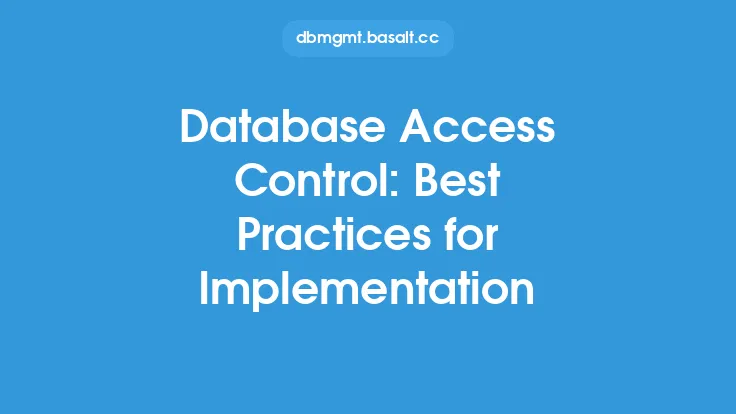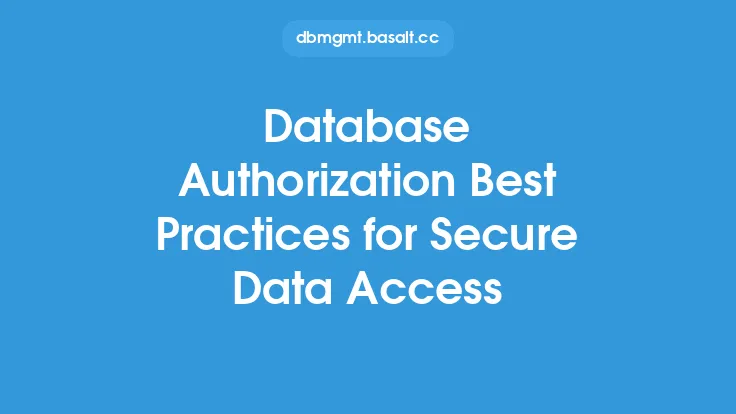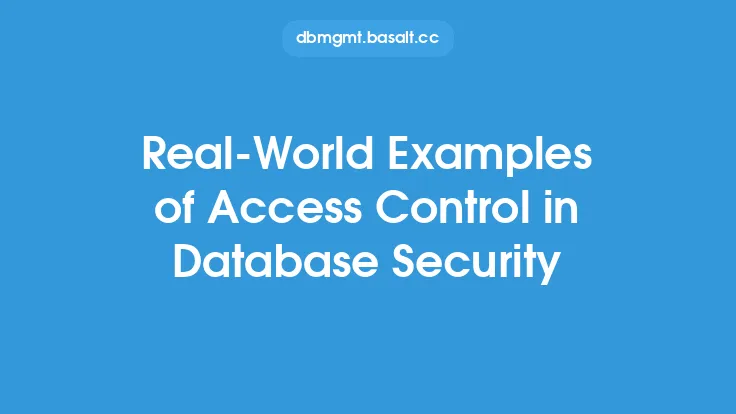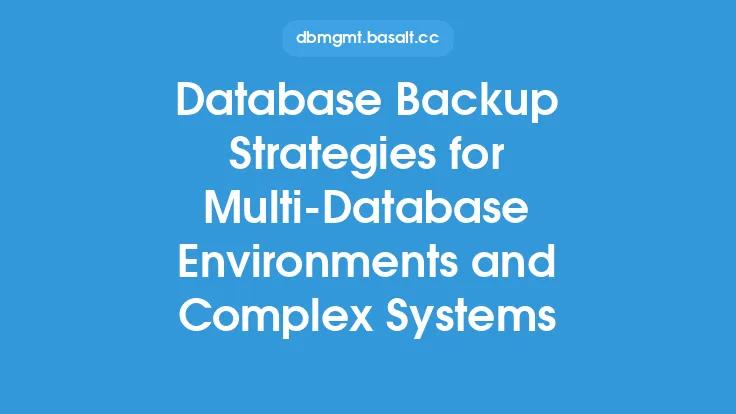Database security is a critical aspect of protecting sensitive data, and one of the key components of database security is authentication. Authentication is the process of verifying the identity of users, applications, or services that attempt to access a database. In recent years, multi-factor authentication (MFA) has become a widely accepted best practice for securing database access. In this article, we will delve into the world of multi-factor authentication for database access, exploring its benefits, types, and implementation considerations.
Introduction to Multi-Factor Authentication
Multi-factor authentication is a security process that requires a user to provide two or more authentication factors to access a database. These factors can be something the user knows (such as a password or PIN), something the user has (such as a smart card or token), or something the user is (such as a biometric characteristic like a fingerprint or face recognition). The use of multiple factors provides an additional layer of security, making it more difficult for unauthorized users to gain access to the database.
Types of Multi-Factor Authentication
There are several types of multi-factor authentication that can be used to secure database access. These include:
- Knowledge-based authentication: This type of authentication requires the user to provide information that only they would know, such as a password or PIN.
- Possession-based authentication: This type of authentication requires the user to have a physical token or device, such as a smart card or USB token.
- Biometric authentication: This type of authentication uses unique physical characteristics, such as fingerprints, facial recognition, or voice recognition, to verify the user's identity.
- Behavioral authentication: This type of authentication uses patterns of behavior, such as typing patterns or mouse movements, to verify the user's identity.
- Location-based authentication: This type of authentication uses the user's location to verify their identity, such as requiring the user to be connected to a specific network or IP address.
Benefits of Multi-Factor Authentication
The use of multi-factor authentication provides several benefits for database security. These include:
- Improved security: MFA makes it more difficult for unauthorized users to gain access to the database, reducing the risk of data breaches and cyber attacks.
- Reduced risk of phishing: MFA makes it more difficult for attackers to use phishing attacks to gain access to the database, as the attacker would need to have access to multiple factors.
- Compliance with regulations: Many regulatory requirements, such as PCI-DSS and HIPAA, require the use of multi-factor authentication to protect sensitive data.
- Increased user trust: The use of MFA can increase user trust in the database and the organization, as users feel that their data is being protected.
Implementation Considerations
Implementing multi-factor authentication for database access requires careful consideration of several factors. These include:
- User experience: MFA should be implemented in a way that minimizes the impact on the user experience, such as using a one-time password (OTP) or a push notification.
- Cost: The cost of implementing MFA should be carefully considered, including the cost of hardware, software, and maintenance.
- Complexity: The complexity of the MFA solution should be carefully considered, including the number of factors required and the ease of use.
- Integration: The MFA solution should be integrated with existing database security measures, such as firewalls and intrusion detection systems.
Technical Implementation
The technical implementation of multi-factor authentication for database access typically involves the use of a combination of hardware and software components. These may include:
- Authentication servers: These servers are used to manage the authentication process, including verifying user credentials and generating OTPs.
- Token generators: These devices are used to generate OTPs, which are then used to authenticate the user.
- Biometric scanners: These devices are used to capture biometric data, such as fingerprints or facial recognition.
- Smart cards: These cards are used to store cryptographic keys and other sensitive data, and are often used in conjunction with PINs or passwords.
- Database management systems: These systems are used to manage the database and enforce MFA policies, such as requiring users to provide multiple factors to access the database.
Best Practices for Multi-Factor Authentication
To get the most out of multi-factor authentication, several best practices should be followed. These include:
- Use a combination of factors: Using a combination of factors, such as a password and a biometric characteristic, provides the strongest security.
- Implement a password policy: A strong password policy should be implemented, including requirements for password length, complexity, and rotation.
- Use a secure token generator: A secure token generator should be used to generate OTPs, such as a hardware security module (HSM).
- Monitor and analyze logs: Logs should be monitored and analyzed to detect and respond to potential security incidents.
- Provide user education: Users should be educated on the importance of MFA and how to use it correctly, such as not sharing passwords or tokens.
Common Challenges and Limitations
While multi-factor authentication provides several benefits for database security, there are also several common challenges and limitations. These include:
- User resistance: Some users may resist the use of MFA, citing concerns about convenience or usability.
- Cost: The cost of implementing MFA can be significant, particularly for small or medium-sized organizations.
- Complexity: The complexity of MFA solutions can be a challenge, particularly for organizations with limited IT resources.
- Interoperability: MFA solutions may not be interoperable with all database management systems or applications, which can limit their use.
Future of Multi-Factor Authentication
The future of multi-factor authentication for database access is likely to involve the use of more advanced technologies, such as artificial intelligence (AI) and machine learning (ML). These technologies can be used to improve the accuracy and efficiency of MFA, such as by using behavioral biometrics to verify user identity. Additionally, the use of cloud-based MFA solutions is likely to become more prevalent, providing organizations with greater flexibility and scalability. As database security continues to evolve, the use of multi-factor authentication is likely to play an increasingly important role in protecting sensitive data.





